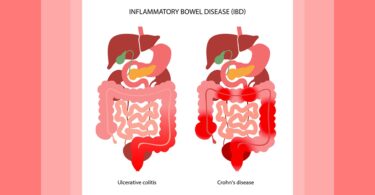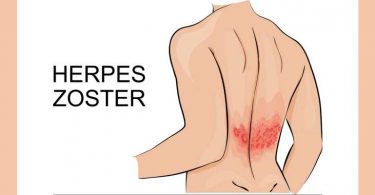Are you looking for a homeopathic cure for ear disease? This article discusses the homeopathy treatment of ear disease along with the best homeopathic medicine for ear disease treatment.
Ear diseases includes pathology related to the structures of ear.
What is the structure? Let’s see
The ear is the organ of hearing and balance. The parts of the ear include:
External or outer ear, consisting of:
- Pinna or auricle. This is the outside part of the ear.
- External auditory canal or tube. This is the tube that connects the outer ear to the inside or middle ear.
- Tympanic membrane (also called the eardrum). The tympanic membrane divides the external ear from the middle ear.
Middle ear (tympanic cavity), consisting of:
- Three small bones that are connected and transmit the sound waves to the inner ear. The bones are called:
- Malleus
- Incus
- Stapes
- Eustachian tube. A canal that links the middle ear with the back of the nose. The eustachian tube helps to equalize the pressure in the middle ear. Equalized pressure is needed for the proper transfer of sound waves. The eustachian tube is lined with mucous, just like the inside of the nose and throat.
Inner ear, consisting of:
- Cochlea (contains the nerves for hearing)
- Vestibule (contains receptors for balance)
- Semicircular canals (contain receptors for balance
Diseases of Ear
Otitis Media
The medical term for a middle ear infection (Homeopathy for Ear Infection) or inflammation of the middle ear. This primarily affects children due to the shape of the young eustachian tube. It has two types
- Acute otitis media
- Chronic otitis media
Acute otitis media
Acute otitis media (AOM) is a viral or bacterial infection of the middle ear that is most commonly caused by Streptococcus pneumoniae. AOM is a common infection in children under the age of five years and it usually follows an upper respiratory tract (URT) infection.
Symptoms -It is characterized by an acute onset of symptoms include ear pain, fever, anorexia with signs of middle ear inflammation as bulging tympanic membrane, effusion etc.
Treatment– Mild and unilateral infections are often self-limiting. Bilateral AOM or severe symptoms are usually treated with oral amoxicillin.
Complications are rare and occur mostly in immunosuppressed patients or in AOM due to highly virulent, drug-resistant bacteria. The most common complication is acute mastoiditis, but facial palsy, labyrinthitis (Homeopathy for Labyrinthitis), and in rare cases, even intracranial abscesses may also occur.
Chronic otitis media
Chronic otitis media (OM) refers to a group of chronic inflammatory diseases of the middle ear, which often affects children.
Symptoms -Chronic suppurative otitis media (CSOM) is characterized by a persistent drainage from the middle ear through a perforated tympanic membrane (TM). The condition is often seen in patients with a history of acute otitis media with tympanic membrane rupture and presents with painless otorrhea and conductive hearing loss.
Diagnosis -The diagnosis is confirmed by detection of a TM defect during otoscopy.
Treatment – consists of conservative measures (e.g., antibiotic drops) and tympanoplasty if conservative management fails.
Otitis externa
(OE) refers to inflammation of the external auditory canal, which is most often the result of a local bacterial infection.
Risk factors for OE include injury to the skin of the external auditory canal and/or exposure to water.
Symptoms -OE is characterized by ear pain, discharge, and tragal tenderness.
Diagnosis -Otoscopy
Treatment involves keeping the external auditory canal dry and administering fluoroquinolone and hydrocortisone ear drops. Systemic antibiotic therapy is usually indicated in immunosuppressed and/or diabetic patients who are at risk.
Cholesteatoma
It is a special form of chronic otitis media in which keratinizing squamous epithelium grows from the tympanic membrane or the auditory canal into the middle ear mucosa. The presence of abnormal epithelium in an abnormal location triggers an inflammatory response that can destroy surrounding structures such as the ear bones. Cholesteatomas may be congenital or acquired later in life. Acquired cholesteatomas are usually associated with chronic middle ear infection.
Symptoms are painless ear discharge and progressive hearing loss.
Diagnostic procedures include mastoid process x-rays, temporal bone CT scans, and audiometric tests.
Complications– Left untreated, erosion of the surrounding bone by a cholesteatoma can lead to facial nerve palsy, extradural abscess, and/or sigmoid sinus thrombosis.
Tinnitus
Also called “ringing in the ears” includes noises ranging from loud roaring to clicking, humming or buzzing. Most tinnitus comes from damage to the microscopic endings of the hearing nerve in the inner ear. Hearing nerve impairment and tinnitus can be a natural accompaniment of advancing age. Exposure to loud noise is probably the leading cause of tinnitus damage to hearing in younger people.
External Ear Infections
Also called Swimmer’s Ear are infections of the outer ear structures that may occur when water gets trapped in the ear canal. In this warm, moist environment, bacteria multiply causing irritation and infection of the ear canal.
Autoimmune Inner Ear Disease
It is an inflammatory condition of the inner ear that occurs when the body’s immune system attacks cells in the inner ear that are mistaken for a virus or bacteria.
Hearing loss
It can be defined based on the location of dysfunction as either
- Conductive hearing loss
- Sensorineural hearing loss
Conductive hearing loss is due to dysfunction of the outer or middle ear, which prevents transmission of sound waves from reaching the inner ear.
Sensorineural hearing loss is due to dysfunction of the inner ear or auditory nerve, which prevents neuronal transmission to the brain.
Sometimes hearing loss can have both conductive and sensorineural components, which is referred to as mixed hearing loss.
Diagnosis – Patients who present with hearing loss should be screened with tests such as the whispered voice test. After confirming the diagnosis, Rinne and Weber testing should be performed to differentiate between conductive or sensorineural hearing loss. This may be followed by audiometry, pneumoscopy, laboratory tests, or imaging, depending on the underlying suspected cause.
Treatment depends on the underlying etiology and can include hearing aids or cochlears implants for irreversible conductive or sensorineural hearing loss, respectively.
Homeopathic Remedies & Homeopathy Treatment for Ear Diseases
Homeopathy treats the person as a whole. It means that homeopathic medicine for ear diseases focuses on the patient as a person, as well as his pathological condition. The homeopathic medicines for ear diseases are selected after a full individualizing examination and case-analysis, which includes the medical history of the patient, physical and mental constitution etc. A miasmatic tendency (predisposition/susceptibility) is also often taken into account for the treatment of chronic conditions. The homeopathic remedies for ear diseases given below indicate the therapeutic affinity but this is not a complete and definite guide to the treatment of this condition. The symptoms listed against each medicine may not be directly related to ear diseases because in homeopathy general symptoms and constitutional indications are also taken into account for selecting a homeopathic remedy for ear diseases. To study any of the following remedies in more detail, please visit our Materia Medica section. None of these homeopathic medicine for ear diseases should be taken without professional advice.
Belladonna
The remedy is acute otitis, with digging, boring, tearing pains which come suddenly and are most violent; the membrane tympani is covered with injected bloodvessels. It is the remedy in earache where the symptoms are too violent. The pains come and go suddenly. All the symptoms are worse at night and are relieved by warmth.
Aconite
There is dark redness of the parts, stinging, lancinating or throbbing pains and great sensitiveness. It suits earache from sudden change of temperature; it is worse at night and is aggravated by warmth. Its influence is restricted to a brief period immediately following exposure.
Pulsatilla
A great ear diseases remedy. It exerts a specific curative power in otitis externa; the ear is hot, red and swollen, and there are very severe darting, tearing, pulsating pains in it which are worse at night. It, too, occupies the highest place for acute inflammation of the middle ear. It is indicated also by profuse thick, yellowish green discharge from the ear, deafness and a feeling as if the ears were stopped up, or as if something were being forced out; there are also roaring noises synchronous with the pulse. It suits especially subacute cases. Itching deep in the ear.
Plantago
Earache associated with toothache; also, excellent locally. Pain goes through head from one ear to the other.
Tellurium
A most excellent remedy in otitis media with thin, acrid, offensive discharge, very profuse and long-lasting; canal sensitive to touch.
Hydrastis
It is a remedy not to be overlooked in catarrhal inflammation of the middle ear with accompanying nasopharyngeal catarrh, tinnitus aurium and thick tenacious discharges.
Ferrum Phosphoricum
This remedy is a most useful one in ear diseases, suiting congestive and inflammatory stages of most troubles, more especially in anaemic subjects. It is a reliable remedy in acute earache; it has tinnitus like Pulsatilla, but no special deafness, and like Borax it has sensitiveness to sound. The pain is throbbing or sharp stitching and occurs in paroxysms. The following is Dr. Wanstall’s practical resume:
- A tendency of the inflammatory process to be diffused instead of circumscribed.
- Dark beefy redness of the parts.
- A muco-purulent discharge with tendency to haemorrhage.
- The establishment of the discharge does not relieve the pain.
- The pain is in paroxysms.
Chamomilla
Almost specific in infantile earache; the pains are violent, worse from warmth, the cheeks are red, the patient is restless, fretful and there is great hyperaesthesia and much suffering. Patient worse at night and from slightest cold. Borax. Child starts up nervously with the pain; muco-purulent otorrhoea.
Capsicum
corresponds to otitis media, with rupture of the membrane tympani, and great soreness of the mastoid portion of the temporal bone. It suits also chronic suppurations of the ear with bursting headache and chilliness; the ears are hot, and the pain to the throat, the drum is perforated and there is a yellow purulent discharge.
Mercurius
Very valuable in suppurative middle ear diseases, with swelling of parotid glands and offensive breath. It suits especially scrofulous and syphilitic ear conditions. It is especially valuable in proliferous middle ear diseases, hardness of hearing due to swollen tonsils. The discharges are thin and acrid, the ears, teeth and face ache, symptoms worse at night, and characteristic is a feeling of stoppage and of internal soreness as if raw, and also roaring in ears.
Silicea
Very valuable in suppurative middle ear troubles, especially in cases complicated with caries or necrosis of the bones and attended with a thin, ichorous and offensive discharge containing little pieces of bone. Perforations of the membrane tympani heal rapidly under Silicea. A peculiar symptom leading to the remedy is an itching and tingling in the locality of the Eustachian tube. There are also shooting pains through the ear and profuse perspiration, sudden snuffing, cracking sound in the ear like the explosion of a percussion cap. It promotes repair of the drum head. It is most frequently indicated in persistent chronic otorrhoea with oversensitiveness to sounds. Dr. Moffat advises changing to Lapis albus after use of Silicea for too long a time.
Hepar sulphur
Also valuable in suppurative otitis media, and is useful in earache when suppuration impends. There is great soreness and sensitiveness to the slightest touch, acute exacerbations of the trouble with increased discharge, which is thick, creamy and somewhat offensive. Patients requiring Hepar are irritable and sensitive to the slightest draft of air. Lachesis. Roaring and singing in the ears, relieved by putting finger in ear and shaking it, therefore catarrhal. Crotalus. Stuffed feeling in ear and a sensation as if wax were trickling out. Conium. Increased quantity of dark wax. Hepar suits especially otorrhoeas dating from scarlatina.
Causticum
This remedy is useful in roaring and buzzing in the ears, words and sounds re-echo unpleasantly. It suits a catarrh of the Eustachian tube. Its special field of action is in affections of the auditory nerves.
Sulphur
It is useful for a most offensive discharge from the ears and syringing does no good, the ears are red, raw, and the discharge excoriates. Psorinum is even better than Sulphur in case of offensive discharges from the ears; there is with this remedy a general unhealthy condition of the patient, pustules appear on the face, around the nose, mouth and ears, the blood is impure and the system run down. It is a remedy not to be despised in ear affections, and is especially to be considered in cases of chronic otitis media, probably of psoric origin,in which other remedies and methods of treatment have been tried unsuccessfully.
The above information about homeopathy treatment of ear disease is only for information purpose. Please consult a professional homeopath before taking any homeopathic medicine for ear disease.
Reference:
- Harrison’s Principles of Internal Medicine, 14th ed, McGraw-Hill
- Davidson’s Principles and Practise of Medicine, 17th ed, 1996, Churchill Livingstone
- New Manual of Homeopathic Materia Medica & Repertory, William Boericke, 2nd revised ed., 2001, B. Jain
- www.amboss.com
- www.wikipedia.org
Ear Diseases Cases Cured with Homeopathic Medicine
A Case of Infections and Sleeplessness – by Mary Ellen Meagher
An Acute Earache – by Rochelle Marsden








my mother has a big problem about 1 year .
in her right ear she just heard a sound like tuning sound …as like as when we tune television .
its very partihitic for for her .
24 hours she heard this sound ..
and also she cant listen properly
her age about 45
i have hearing loss and trying to do treatment by homeopathy. ent dr saed there was a problem in hearing nerves(nurves drying). ent dr’s medicine was not work so i thinking about homeopathy treatment. so pls can you advice me some homeopathy medicine? my problem is last 5 year and very update for future.
Been having hearing loss (up to 65%) since last 5 years. Is there some homeopathy cure for this. My age is 65.